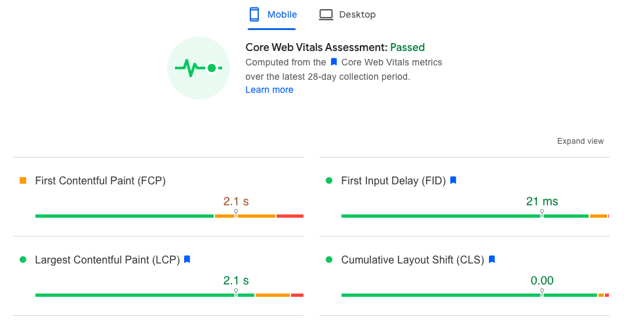Call Sales: +1 (833) 437-3835
Call Sales: +1 (833) 437-3835

Quality search engine optimization (SEO) can make or break your business. This is true for a variety of retailers, whether you run an eCommerce business, a news website, or an old-fashioned store and are simply trying to maintain an online presence. If your potential customers are having trouble finding your company's website, you might be giving up on a large chunk of your revenue.
Maintaining a perfectly optimized website can be a daunting task. SEO has evolved significantly over the years and is growing ever more complex.
Google, for example, currently uses well over 200 ranking factors in its algorithm. This means there is a multitude of details you need to be mindful of when it comes to SEO strategy. For tips on optimizing SEO for a restaurant website, check out this blog post.
Monitoring website changes can be challenging as well, and modern tech is a considerable aid in maintaining the competitiveness of your website. It can help you keep track of all the complex aspects of SEO and make improvements that will—over time—significantly impact your website's performance.
What follows is a look at five actionable ways you can use website change monitoring to improve your SEO, and thus, give your business the edge it needs to beat your market competitors.
When managing an enormous website worked on by a large group of people, it can be difficult to keep track of every minor alteration made on a daily basis.
For example, a sloppy content writer could be omitting important keywords or adding some of their own; someone could accidentally delete your privacy policy, placing you in violation of GDPR. It is, therefore, crucial to be aware of these problems as soon as possible, and take appropriate measures to correct them.
If you are monitoring website changes regularly and in detail, you’ll be able to see how many pages were added in a given time period, to monitor keywords, as well as many other factors.
You can do this manually, using tools such as Ahrefs or Semrush; another option is to create a script in Python (or any other option that you find easy to work with) that will monitor website changes.
If you don’t have the time or the skills for manual monitoring, a dedicated software service provider can update you on your SEO strategy. This is particularly important if you run a constantly changing website and use outside contractors.
Small changes in keyword variations, especially in your title, h1 tag, and meta description, can sometimes significantly affect your rankings.
Monitoring website changes enables you to compare fluctuations in your website's search engine results page (SERP) performance easily, providing information on the actual changes made on your website at that particular time.
Use the Google Search Console to find a spike (or drop) in the number of impressions and clicks. You can then compare this data with your monitoring report and determine what changes were made just before this happened.
While monitoring various aspects of SEO performance, such as click-through rate (CTR), time on page, what keywords you rank for, and so forth, you can use the website monitoring report as a reference.
By comparing changes made to your website with fluctuations in the various metrics, you can precisely determine which changes had what effect at any given time. You can then use this data to observe trends, implement new practices, and fine-tune your website's SEO over time.
Additionally, as SEO is constantly changing, there is a chance you might inadvertently be violating some search engine rules. Make an effort to keep up-to-date with SEO strategy best practices; modern and comprehensive tech tools can help you determine whether your website’s practices are in line with guidelines and thus avoid penalization.
The most fundamental aspect of monitoring website changes is ensuring its performance, availability, and functionality are up to par at all times.
Since website loading speed is one of Google's top 10 search ranking factors, inadequate performance of your website will have a direct negative effect on its SEO, in turn impacting your conversion rates.
Users will quickly leave a poorly functioning or slow website and take their business elsewhere. Even if you have great content on your website, it isn't worth much if users need to wait around for a long time before seeing it.
Various factors, such as geographical location, device, operating system, or browser, can influence the performance of your website. Monitoring software will typically check the return for a response code, and the return of content you specify, and record load times for each particular element that loads in the browser. This data can be used to make improvements and take care of possible bottlenecks. 
User experience, or UX, is another important factor for improving SEO. You need to ensure that your users can efficiently navigate your website and complete their intended goals.
For example, recurring login problems on an e-commerce website will frustrate customers or even prevent them from making a purchase. This will not only adversely affect your SEO strategy, but will also have a direct and measurable effect on your revenue.
Improving the speed and functionality of your website will ultimately reduce bounce rates and lead to higher user retention.
Another handy tech perk is monitoring whether your website is online. Downtime can do significant damage to your revenue and the reputation of your company.
Software used for monitoring website changes will typically also monitor whether the website is online, and send an alert if it is not. If such an event occurs, it should be considered a priority issue and handled immediately.
Your website can also have some hard-to-spot issues, such as missing meta tags or broken links. Since a typical website has hundreds upon hundreds of links, a few broken ones will likely creep in periodically.
For example, someone may have misspelled the URL, or the linked page could have been deleted. Whatever the case, neither website users nor search engines like broken links, which is why they are sure to negatively impact your SEO performance.
As with the other issues above, simple lines of code can help detect these sorts of issues and send a report on the findings. You can then act to bring your website in line with current SEO guidelines.
Caption: The performance report will detect the issues and potential bottlenecks of your website.
Additional pages on your website, redirects or deletions of valuable pages could mean a defacement attack has occurred. In such cases, it's better to know sooner than later.
Akin to digital graffiti, a defacement attack will change the visual elements of a web page or even change or redirect an entire website.
For example, the website of the multinational tech giant Lenovo was attacked in 2015. For several hours, their main website was redirected to a slideshow of bored teenagers, as reported by Guardian.
Despite your security efforts, attacks such as these can occur, and when they do, it is crucial to react immediately. In addition to defacement attacks, your website might be vulnerable to a host of potential threats, such as malicious bots or distributed denial of service (DDoS) attacks.
If your users have a bad experience, or if the attack impairs the functionality of your website, this will surely have an impact on your bottom line.
By constantly monitoring changes on your site, you can react immediately to suspicious activity and notify your developers to take appropriate action.
Although you may adhere to all SEO guidelines to maximize your score, your website is ultimately being ranked in relation to competing websites. Therefore, by monitoring your competitors, you can determine which SEO adjustments seem to be working for them.
You should keep track of your competitors' websites over time to find what keywords they are using, what pages have been added or removed, as well as what changes they have made to their meta tags.
By analyzing this data, you can understand the changes made by your competitors and use it to your advantage. If they positively affected their website's performance, you can consider implementing similar strategies or incorporate their practices into your own SEO strategy.
You can also use website monitoring to keep tabs on your competitors' social media profiles. Along with the data on keywords, this can be an excellent source of ideas for your content.
Keeping an eye on the changes made to your website and the problems that might have crept in, is mandatory for any business that relies on website traffic for its marketing.
However, the large number of factors influencing the SEO performance of your website makes manual monitoring undependable at best and largely unfeasible at worst.
As websites are becoming more and more complex, monitoring website changes is quickly becoming essential to successful SEO. Whatever business you may be in, you stand to lose a significant amount of money if your website ranks poorly on search engines.
Consider investing in a website monitoring service to address problems on your website as soon as they appear. This will help you ensure consistent performance, adherence to SEO guidelines, and, ultimately, save money in the long run.
Peter Bray is an AI practitioner with a keen interest in competitive intelligence and web change monitoring. He is the CEO of Fluxguard.